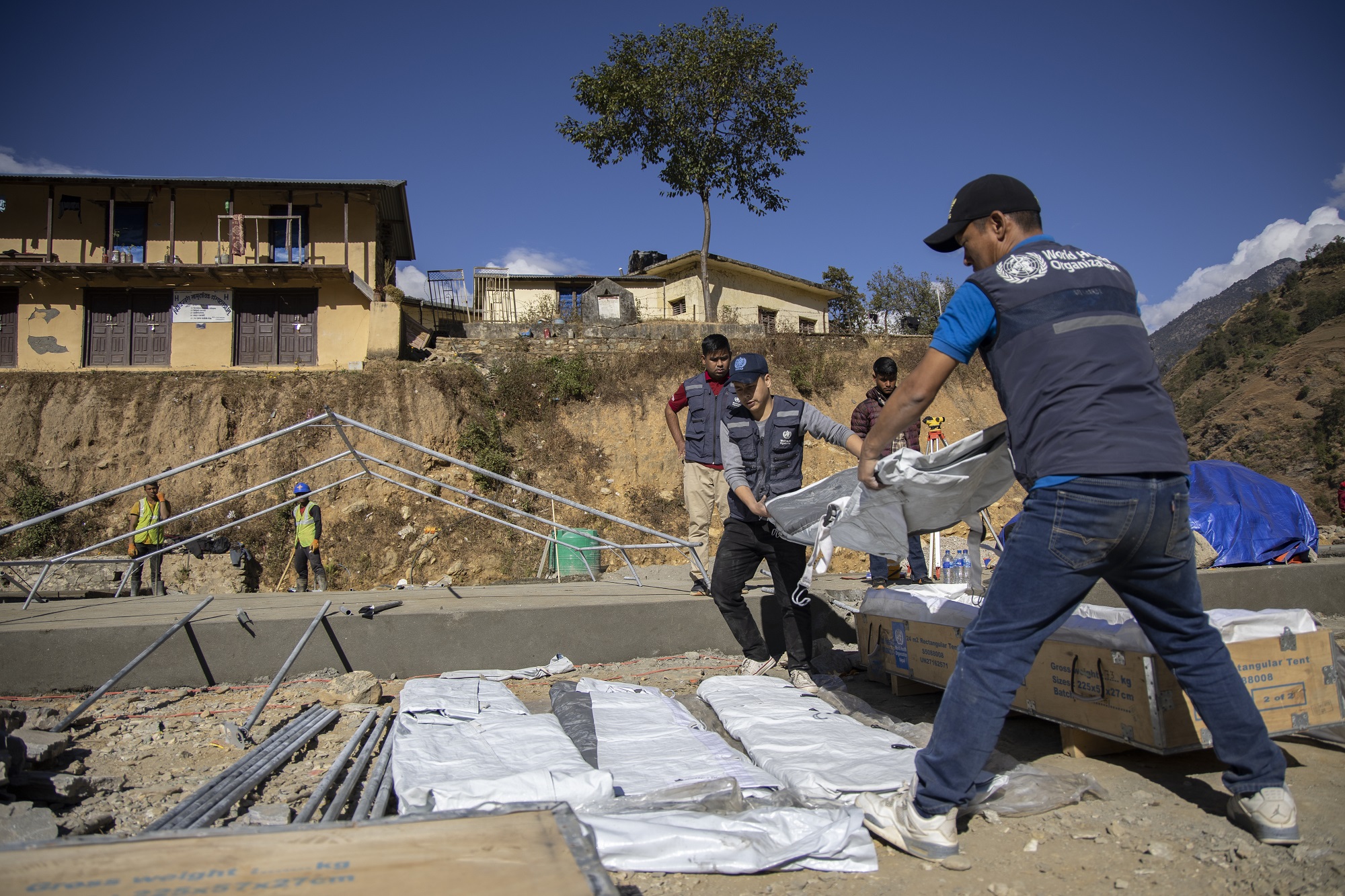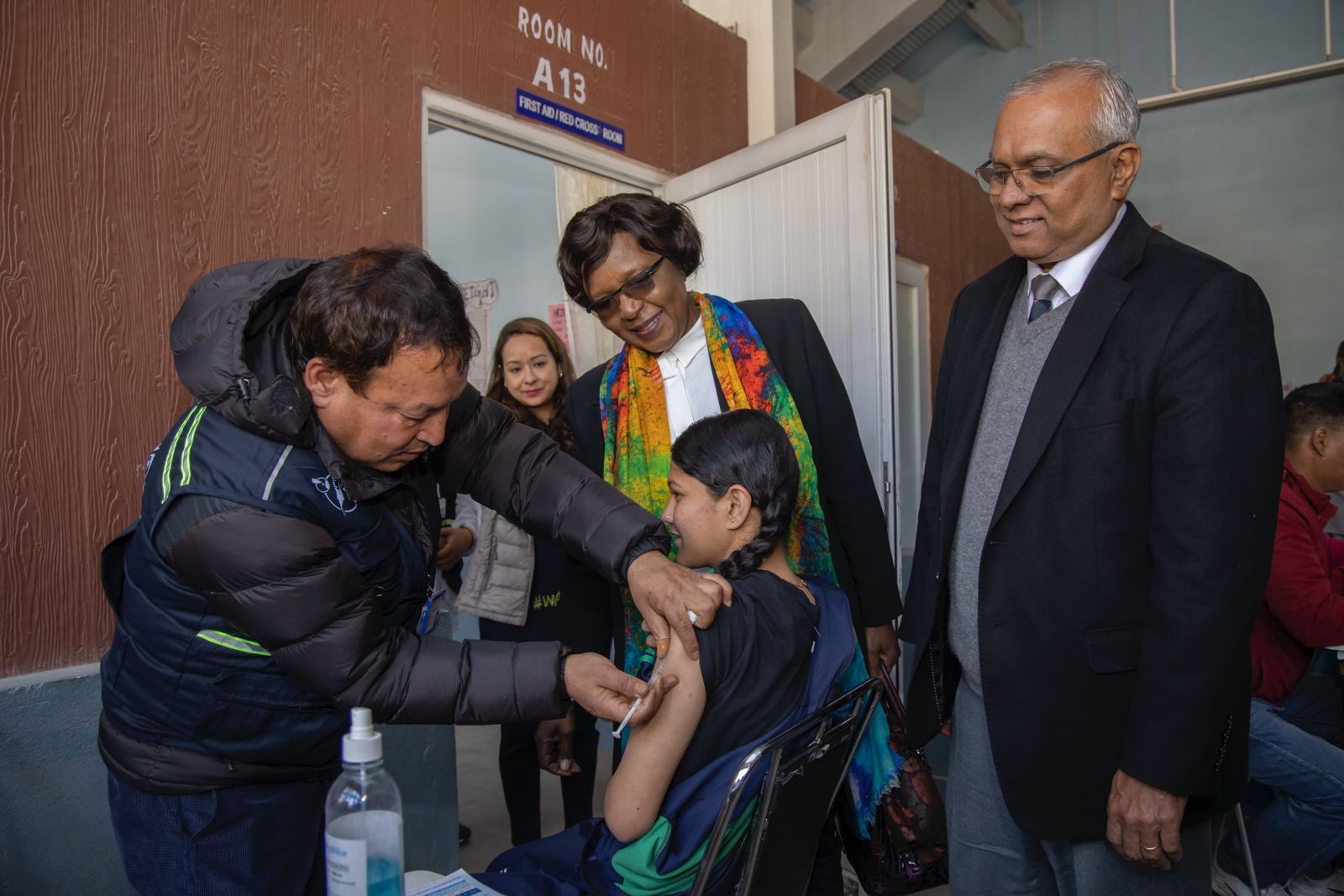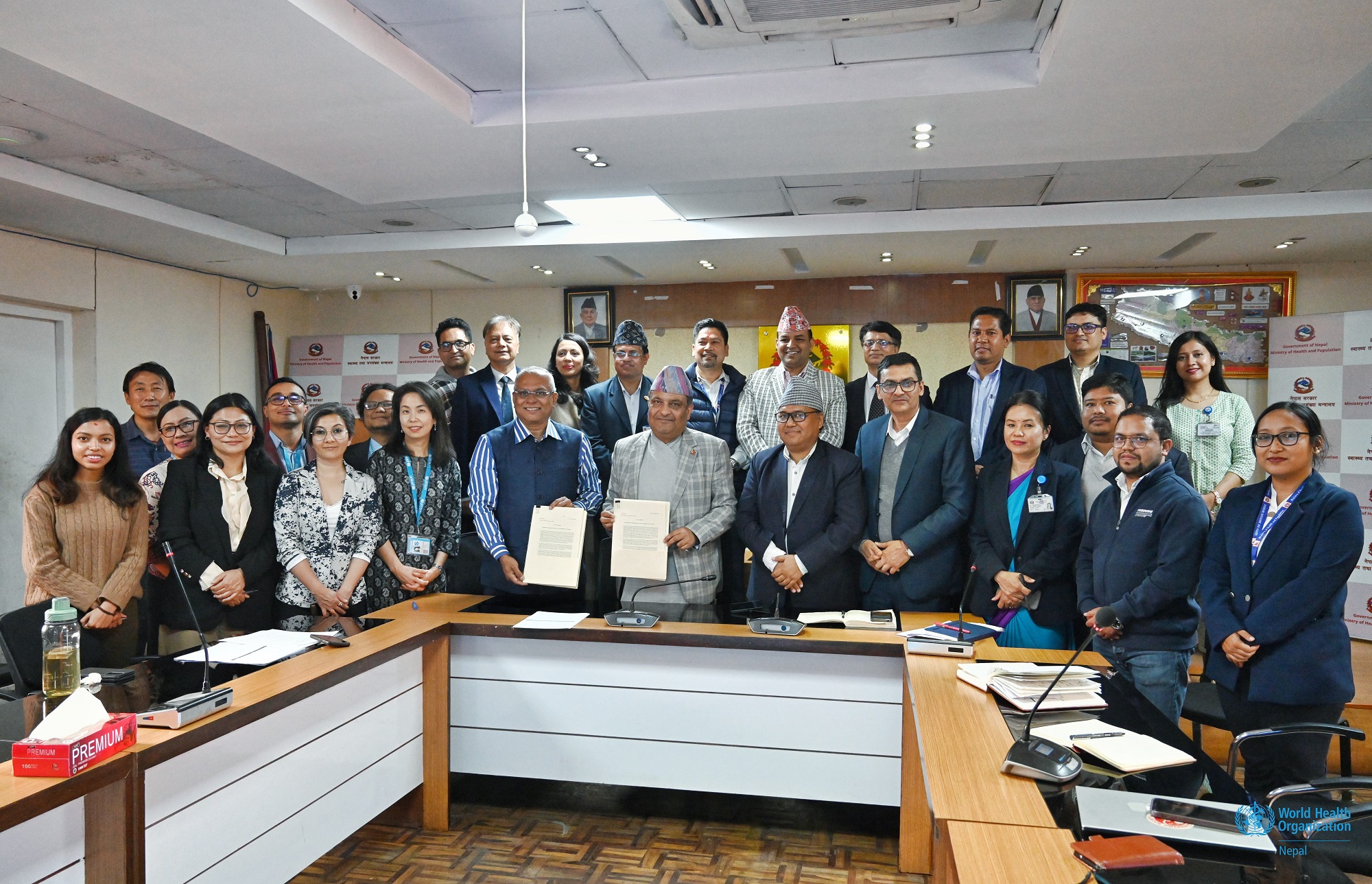As the year comes to an end, we reflect on some of the remarkable public health achievements of Nepal for 2024. These 10 accomplishments highlight the collaborative efforts between WHO and the Ministry of Health and Population in addressing pressing health challenges and improving health outcomes nationwide and stand as a testament to what can be achieved through partnership and collective commitment.
Jajarkot Earthquake Response

WHO supported Nepal's government in responding to the Jajarkot earthquake, guiding strategic planning and facilitating coordination among three levels of government and health partners, ensuring unified and coordinated health response. Efforts included training of health workers for diagnosis and treatment of priority diseases and promoting risk communication and community engagement, and assistance for syndromic surveillance, successfully averting any outbreaks. Timely distribution of emergency medical supplies and the establishment of medical camp kits (MCKs) and solarization of the health facilities helped restore and sustain essential health services in the affected areas.
Nationwide measles-rubella (MR) Vaccination Campaign

To accelerate the progress towards achieving the national target of measles-rubella elimination by 2026, Nepal vaccinated over 6.3 million children through a nationwide campaign conducted between February to March 2024. Supported by Gavi, the Vaccine Alliance; WHO; and UNICEF; the campaign targeted zero-dose and under-immunized children affected by the pandemic. It was also integrated with pentavalent, PCV and IPV.
Launch of National Action Plan on AMR
/countries/nepal/ajy_9147.jpg?sfvrsn=8d5dc57_2)
Nepal launched a multisectoral National Action Plan to address Antimicrobial Resistance (2024-2028) through a One Health approach. Developed with extensive stakeholder engagement, the plan provides a five-year roadmap to mitigate AMR risks and enhance multisectoral collaboration, and is aligned with the Global Action Plan on AMR.
Nepal joins the Global Platform for Access to Childhood Cancer Medicines

In March 2024, Nepal joined the Global Platform for Access to Childhood Cancer Medicines (GPACCM), a joint initiative of St Jude Global and WHO to increase access to lifesaving childhood cancer medicines in low-and middle-income countries. As a member of the platform, Nepal will receive essential childhood cancer medicines free of cost for four years.
Nepal accelerates its efforts towards Lymphatic Filariasis Elimination by 2030
/countries/nepal/dsc_30753dba2ee8-9e9d-4386-8f41-b69a42830da1.jpg?sfvrsn=2cb11c49_5)
WHO's collaboration with Nepal's Ministry of Health and Population has been crucial in advancing the goal of eliminating Lymphatic Filariasis (LF) by 2030. In April-May, WHO supported a Mass Drug Administration (MDA) campaign across seven districts, achieving over 80% coverage, with more than 4.2 million individuals receiving the treatment. Between May- July, WHO facilitated onsite coaching at 23 hospitals to strengthen LF morbidity management, while a program review conducted in March-July prepared a pre-dossier for validating LF elimination as a public health problem by 2030. In September, WHO Nepal supported training on MMDP for 120 health professionals, equipping them to deliver essential care for lymphedema and hydrocoele patients. By the end of 2024, 53 of 64 endemic districts (82%) had ceased MDA after meeting Transmission Assessment Survey (TAS) thresholds, with WHO providing technical support and test kits for post-MDA surveillance. These efforts mark significant progress toward LF elimination in Nepal.
Nationwide IPV Catch-Up Campaign
/countries/nepal/picture2.jpg?sfvrsn=d74d1cdc_11)
Nepal successfully vaccinated 1.4 million children during an IPV catch-up campaign conducted in May-June 2024 targeting those who missed vaccines due to global shortages. Supported by Gavi, the Vaccine Alliance and WHO, the campaign was conducted for risk mitigation, primarily to minimize the number of paralytic poliomyelitis cases, should poliovirus type 2 be reintroduced or emerge. Strong collaboration between health and education sectors ensured 96% coverage.
Rapid Response to Vaccine-Derived Poliovirus Type-3 (VDPV-3) detection in Nepal
/countries/nepal/picture3.jpg?sfvrsn=563644b_9)
On 13 July 2024, Nepal detected Vaccine-Derived Poliovirus Type-3 (VDPV3) in an environmental sample, confirmed by WHO Polio Regional Reference laboratory in Bangkok. Following a risk assessment and recommendations from the National Immunization Advisory Committee, the National Immunization Programme launched a rapid response bOPV vaccination campaign targeting children under five. More than 300 000 children were vaccinated in three selected districts within 14 days. The response showcased Nepal's ability to manage potential outbreaks with strong government commitment, coordination, and partner support.
Transforming Drug Resistant Tuberculosis Care in Nepal: Rollout of all oral BPaLM treatment regimen

Nepal, which ranks among the top 30 high burden countries for drug-resistant TB, previously relied on a 24-month injectable regiment with a 71% success rate. In late 2023, a regional Green Light Committee (rGLC) mission supported the transition to an oral regimen by enhancing clinical and laboratory capacities. This led to the endorsement of the transition plan and updated National DRTB guidelines in 2024.
WHO Nepal in collaboration with the National Tuberculosis Control Center (NTCC), trained nearly 100 healthcare workers for the BPaLM regimen. Initially launched in two centers, the programme was scaled nationwide in July 2024. By December 2024, 20% of DRTB patients have been enrolled in the BPaLM treatment. It is anticipated that with this transition, the treatment outcome along with quality of life of DRTB patients will improve.
Breaking Grounds in Maternal Mental Health Care
/countries/nepal/dsc_9883-(1).jpg?sfvrsn=4d4d81d2_6)
In a landmark initiative, the Paropakar Maternity and Women’s Hospital, Nepal’s only government-run tertiary care maternity hospital, opened its first-ever Mental Health Outpatient Unit. This effort, supported by the Ministry of Health and Population and WHO Nepal offers services to pregnant and postpartum women, addressing a longstanding gap in care.
Nepal's Journey to Sustained Elimination of Maternal and Neonatal Tetanus
/countries/nepal/picture4.jpg?sfvrsn=2442f4aa_8)
In December 2024, Nepal conducted a post-validation assessment to ensure continued Maternal and Neonatal Tetanus (MNT) elimination, achieved in 2005 with an incidence rate of <1/1000 live births. Led by the Family Welfare Division (FWD) with WHO and partner support, the assessment aligned with the South-East Asia Regional Vaccine Implementation Plan and NIAC recommendations. Experts from WHO and UNICEF reviewed immunization delivery, cold chain management, surveillance, and maternal care practices. The assessment confirmed sustained MNT elimination, marking another milestone for Nepal's National Immunization Program (NIP), which remains committed to strengthening efforts to maintain this status.
